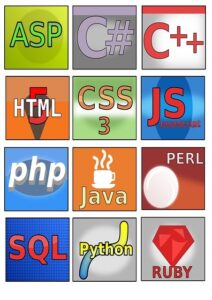 Python, the programming language that’s been taking the computing world by storm, has just released its newest version, the Python 3.9.17, documentation, last June, 2023. Although Python was already around as a software development language since 1994, the stable version released in October 2021 paved the way for its popularity. Aside from being easy to learn for having readable and concise syntax, the language enables developers to devise multi protocol and complex applications; some of which are now the most powerful in the fields of machine learning and data science.
Python, the programming language that’s been taking the computing world by storm, has just released its newest version, the Python 3.9.17, documentation, last June, 2023. Although Python was already around as a software development language since 1994, the stable version released in October 2021 paved the way for its popularity. Aside from being easy to learn for having readable and concise syntax, the language enables developers to devise multi protocol and complex applications; some of which are now the most powerful in the fields of machine learning and data science.
How Python was Established as the Most Popular Language Today
 While many contest observations that Python is currently the most widely used software development language, Dutch software quality assurance firm TIOBE, cited examples of how Python has been analyzed as currently, the dominant languages, toppling Java, Java Script and C from their reputation as most widely used languages.
While many contest observations that Python is currently the most widely used software development language, Dutch software quality assurance firm TIOBE, cited examples of how Python has been analyzed as currently, the dominant languages, toppling Java, Java Script and C from their reputation as most widely used languages.
PopularitY of Programming Language (PYPL) Index – TIOBE analysts used Google search in determining the frequency by which language tutorials are searched. The more times that a programming language has been searched, the greater the assumption that it’s the most popular. The results of TIOBE’s analysis revealed that the Python language tutorial was the most searched for, followed by Java and by Java Script in the second and third positions, respectively.
IEEE Spectrum – This is a digital magazine run and edited by an association of engineering professionals known as the Institute of Electrical and Electronics Engineers. It compiles and publishes peer-reviewed content about science and technology that have potential impact on businesses and the society; using combinations of metrics from various sources, namely: IEEE, Google, Twitter, Reddit, Stack Overflow, CareerBuilder, Hacker News and GitHub. IEEE ranks Python, Java and C as the top 3 popular languages in that particular order.

 Since the disruptions of the past years had impacted nearly all industries, educational software came to include not only tools for improving classroom learning experience. Education programs also comprise applications for teaching new skills to existing workers as well as for onboarding and training fresh employees.
Since the disruptions of the past years had impacted nearly all industries, educational software came to include not only tools for improving classroom learning experience. Education programs also comprise applications for teaching new skills to existing workers as well as for onboarding and training fresh employees. Google Classroom, a Google Apps software that offers numerous tools to help teachers, instructors and mentors stay organized with straightforward teaching processes. Applications allow the production and integration of various teaching materials in assignments.
Google Classroom, a Google Apps software that offers numerous tools to help teachers, instructors and mentors stay organized with straightforward teaching processes. Applications allow the production and integration of various teaching materials in assignments.